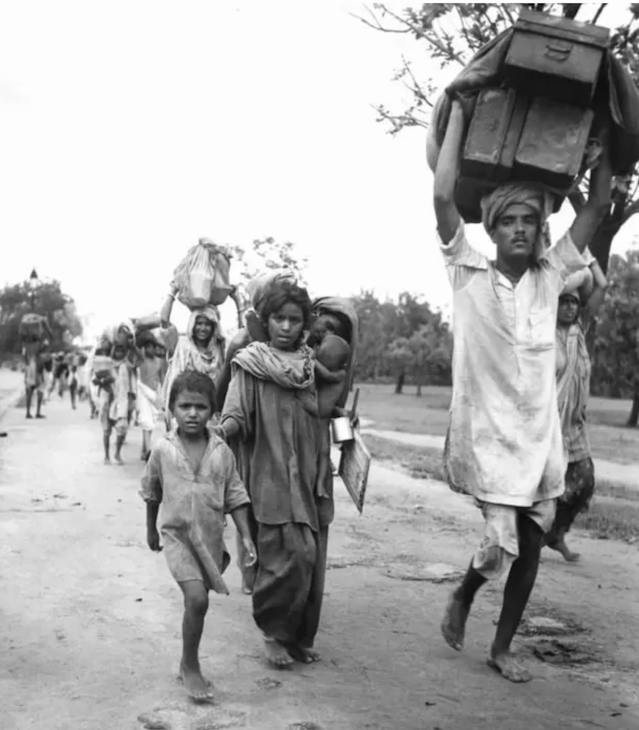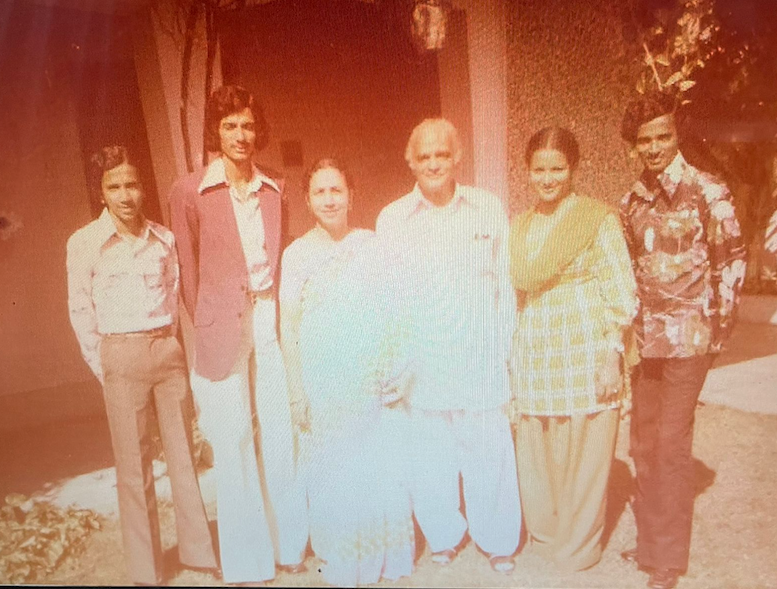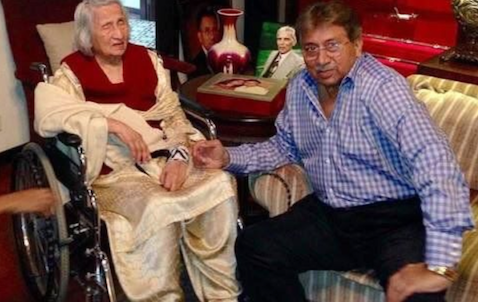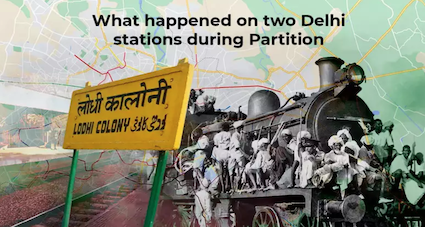(The Partition is a terrible memory of genocide on either side of India and Pakistan. The migration from either side—by foot, four-wheelers, bus or trains—is woven with historic tragedy. In this two-part series, Vivek Shukla, a chronicler like few, gathers the strands of those terrible days. Below is the first of the two-piece series—NewsBred)
The eerie silence and no sight of either coolies or passengers even during the daytime makes Lodhi Colony Railway station very different from others. There is an every possibility that you miss it while driving past it. But for the Lodhi Colony Railway station board, it hardly looks like a railway station. And just across the small service lane of railway station, rows of double storied flats of 1946 built Lodhi Colony are there.
But, it had witnessed thousands of Muslims of Delhi and nearby towns leaving for Pakistan in 1947. They were boarding their ‘Train to Pakistan’ from here. It was a dedicated railway station for trains going across the border. Mostly Hindus-Sikhs refugees coming at the Delhi Junction. Perhaps both stations were earmarked for the big occasion with a view that refugees from across the border see each other as it was very bad time.

Former Pakistan fast bowler Sikander Bakht’s family also took ‘Train to Pakistan’ from the Lodhi Colony station after heated debates among the family members to remain in the land of their forefathers or shift to another country created for Muslims. “ My father and an alumnus of St. Stephans College, J. Bakht, and others members of his family had a house in Karol Bagh known as ‘ Hameed Manzil’. After a lot of acrimonious discussions, some members decided to move out from Delhi. They took train from Lodhi Colony perhaps on August 20, 1947,” recalls Sikander Bakht, who wrecked the Indian batting with his lethal swing bowling at the Ferozeshah Kotla in the city of his forefathers in the 1979-80 India-Pakistan series. He was part of the Asif Iqbal led side that was defeated by Team India in the series. Sikander Bakht’s cousin, Dr.Ayesha Kidwai, who taught at the JNU, says, “ In 1947, many Muslims families were divided as some members decided to remain here, while others left for Pakistan. My father decided that come what may, we would remain India. He never regretted his decision.”

Well, the trains from Delhi to Lahore were running two to three times from the second weeks of August 1947 to 22 August, 1947. All the trains left from here before 12.30 pm. Such timings were fixed so that they reach the Lahore by 7 pm or before darkness descends. Author and ex-Railway board member, Dr. Ravinder Kumar says, “ As trains coming to Indian side or going to Pakistan side carrying refugees were often attacked by merchant of deaths, the timing of trains had been fixed with lot of thought. The main concern was that trains must reach in respectable/ safe times.”
Those who were willing to board trains to Lahore had to buy tickets from the makeshift Pakistan government office at L- block of Connaught Place. That office was issuing tickets to Pakistan bound passengers.
Understandably, when the jam-packed trains were about to leave, very emotional scenes were witnessed. The parting relatives used to hug each other with tears. Sounds of wails and tears could be heard too. Even many pregnant ladies were leaving. Till the very last moments, local Congress leaders like Mir Mustaq Ahmad, Sushila Sharma, Desh Bandhu Gupta and others used to request passengers with folded hands not to leave Gandhi’s India for Jinnah’s Pakistan. Mir Mustaq Ahmad used to narrate those momentous moments with this writer in his Daryaganj office that many people dropped the idea of leaving India after their requests. He was Chief Executive Councillor of Delhi in 1970s.
And once Train to Pakistan left from the Lodhi Colony, it reached the New Delhi Railway station within couple of minutes. It halted there for some 30 minutes. There some bogies were added to the trains. These bogies were only for the Government employees leaving India. It is said that due to partition 20 percent flats of Kishanganj Railway Colony were vacated as almost all the Muslims employees serving in stations like Delhi Junction, New Delhi, Sabzi Mandi, Minto Road had left for Pakistan. Padam Kumar, a social activist and advocate, has lived in Kishan Ganj Railway employees colonies for several decades. Says Padam Kumar, “ I used to hear from my father and others in Kishan Ganj Railway Colony that more or less all the Muslim employees living in Kishanganj Railway Colony had left for Pakistan. Thus, their flats were vacated. Those flats were later occupied by those Railways employees who came from across the Radcliffe Line.” Kishanganj Railway colony is considered as the biggest Railway employees’ colony of the world. It was established in 1920. Those who left for Pakistan were working as Guards, Khalisis, Linemen, etc.
Even the family of the then President of Pakistan Pervez Musharraf had to leave Delhi in 1947 in train. R.P. Puri, the grand old man of Connaught Place and founder of Central News Agency (CNA), was working as a newspaper hawker in Minto Road, Thomson Road and Janpath in 1947. When Musharraf came to Delhi in 2001, Puri called yours truly at CNA. He said that he used to supply newspaper at his house in Minto Road residence till his family left for Pakistan “I still remember his father’s name was Mr.Musharaf-ud-in. He was a senior government servant. The house at Minto Road area was allotted to him by the government. I used to spend time with him very often. He was very gentle and decent man. It is not true that Parvez Musharraf lived at the Neharwali in Daryaganj. It was the house of his mother’s parents. He was born in Lala Girdharilal Maternity Hospital located in Kamala market near Minto Road. That family also left for Pakistan through train as Mr. Mushraff-ud-in has himself told me before leaving and paying my all the bills that they are boarding train.” It is possible that as this family was living in Minto Road so close to ND Railway station, they would have boarded train from the New Delhi Station rather than Lodhi Colony”.

Well, not all the Muslim employees of government living in various New Delhi colonies took trains to leave India. For instance the elders of noted Pakistani journalist, Hamza Habib’s family took plane from Safderjung Airport to reach Pakistan.
According to Habib, “Before partition my maternal grandfather Ghulam Sabir Kazmi was living in a government house at the Babar Road in Delhi. However just before partition he was transferred to Karachi because he was civil engineer by profession and infrastructure related activities were in full swing there, as it was already been declared the capital of Pakistan. Till then his family which consisted of his wife and five children were in Delhi. My mother Mamnoon Fatima was seven years old at that time. Fortunately my grandmother’s bachelor brother who was working at Safderjung airport also living with her. When the communal riots began in Delhi, Hindu neighbours came to rescue our family. They hid my mother’s family in their prayers room.” It may be recalled that Hamza Habib is a close relative of historian Dr. Irfan Habib.
Well, it goes without saying that Muhammad Ali Jinnah, the undisputed architect of Pakistan, also took plane rather than train to reach Karachi on August 14th, 1947. It was August 7, 1947 and the humidity was too much in Delhi. That didn’t deter Jinnah to wear Sherwani even as he was leaving Delhi for last time with his dentist younger sister, Fatima Jinnah and some others. It is said that before entering in his plane at the Safderjung Airport, he looked at the blue skies of Delhi for some moments knowing well that he might not be able to visit here again. He had already sold off his palatial 10 Aurangzeb Road (now APJ Abdul Kalam Road) mansion to his friend, Ram Krishan Dalmia. So, he had nothing left in Delhi and India.
(PS : Alas, it is so unfortunate that Lodhi Colony station has no plaque that can inform as to this station is so important.)
To be Continued….


